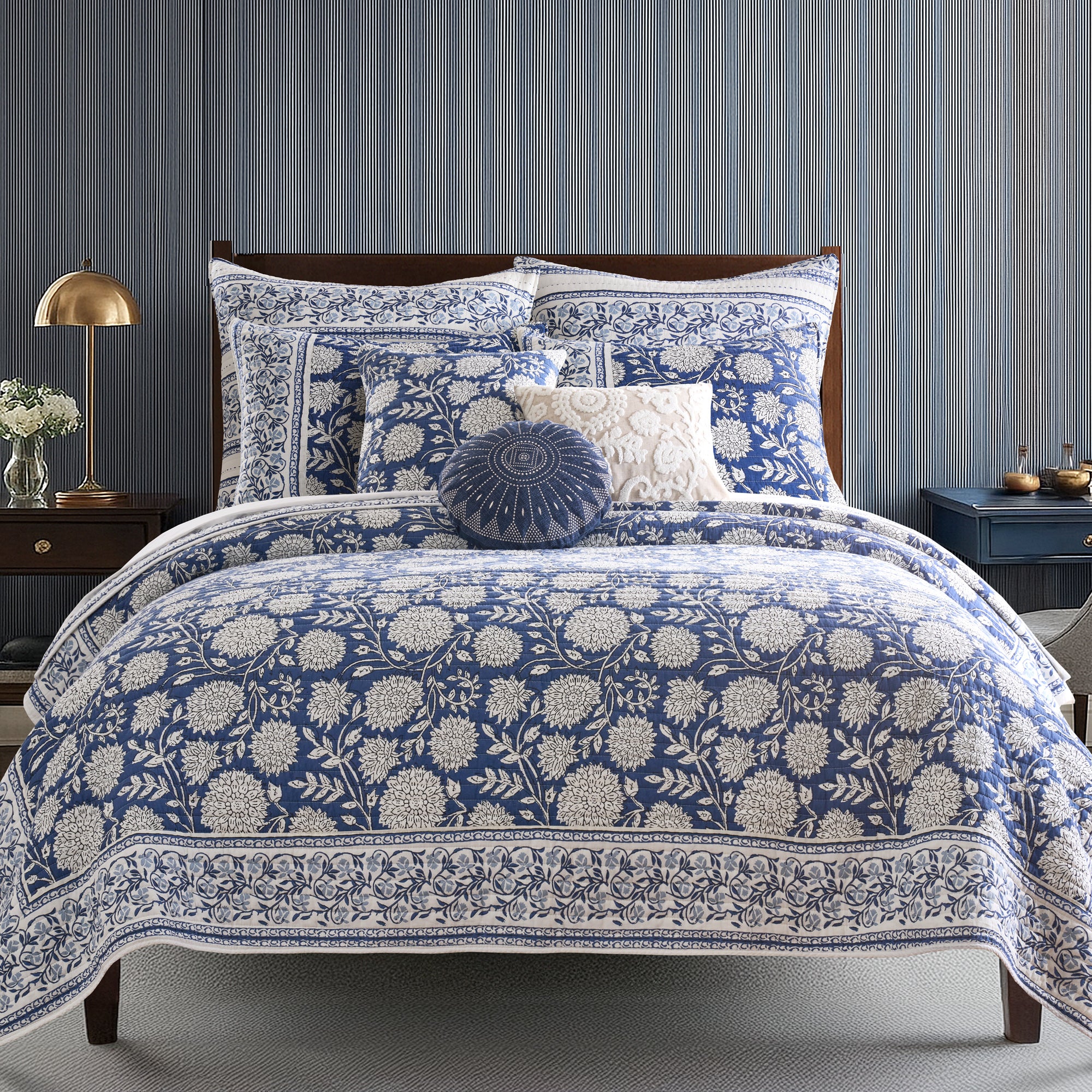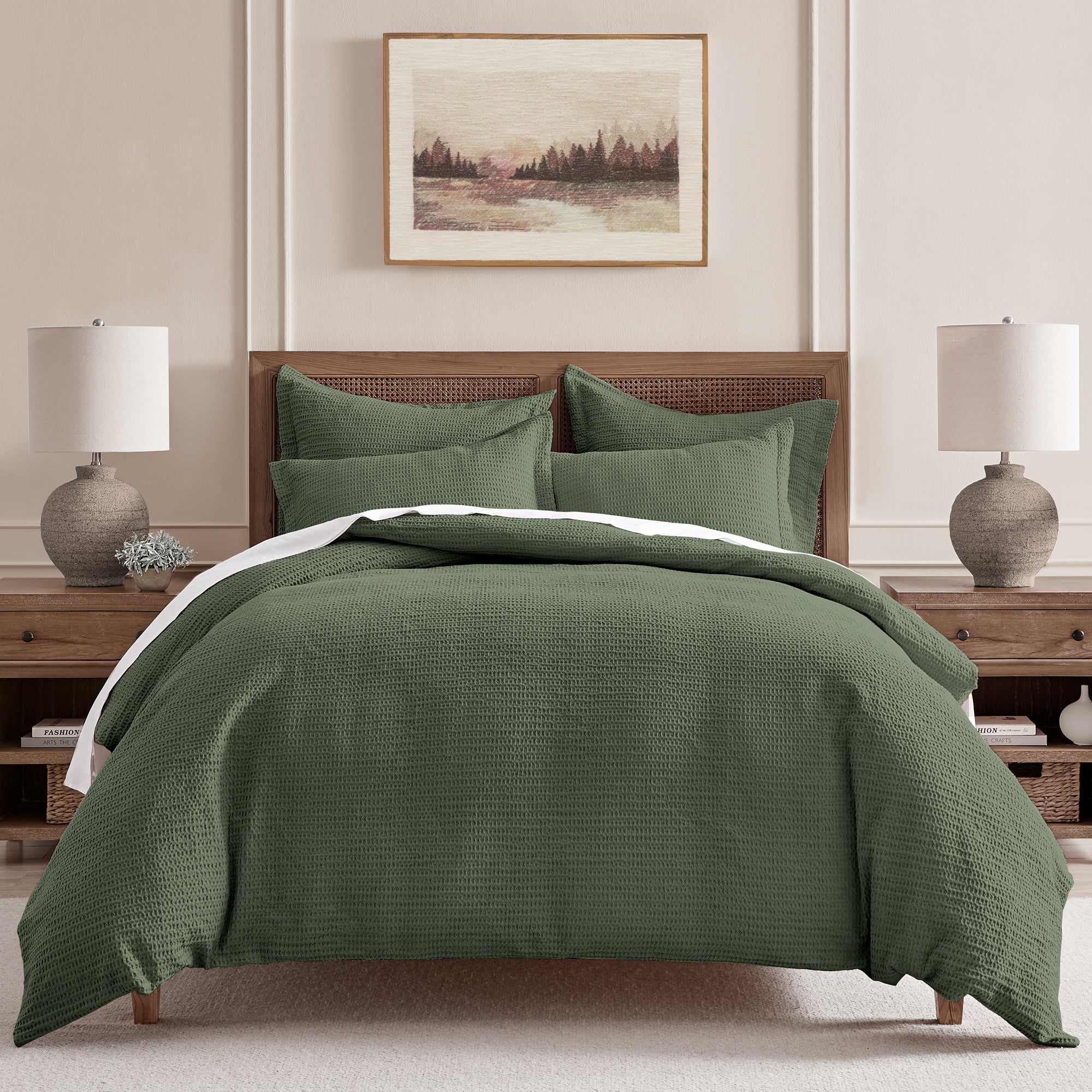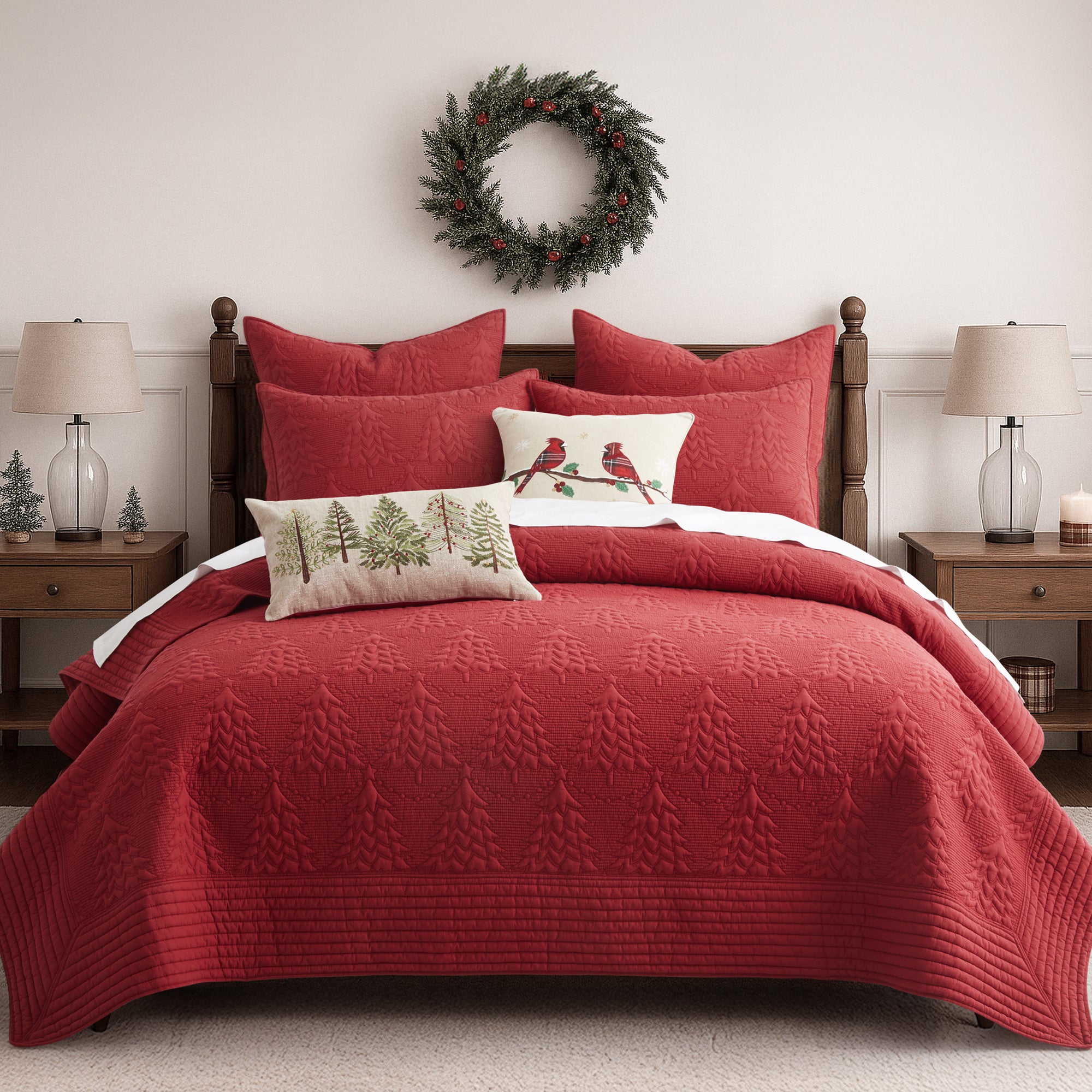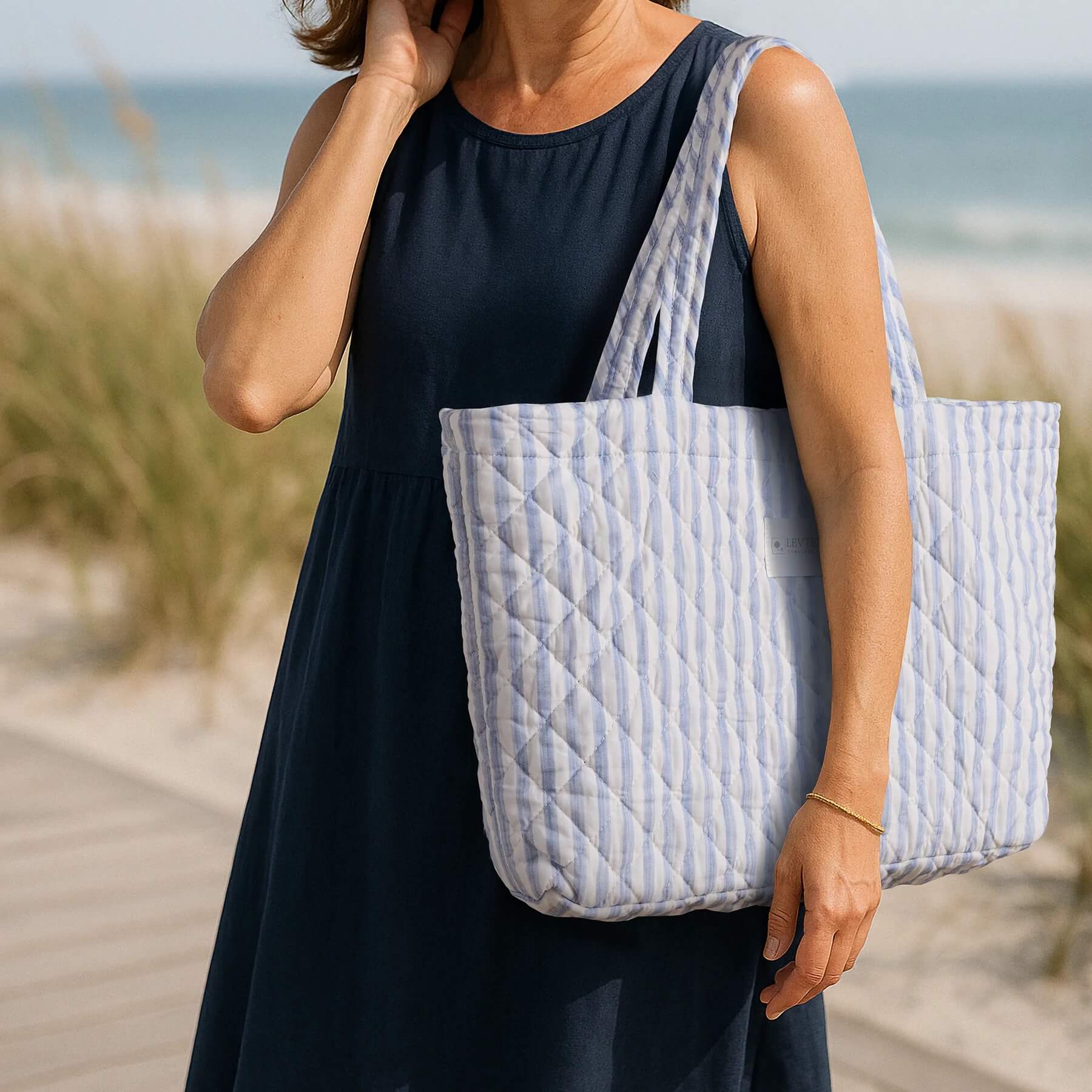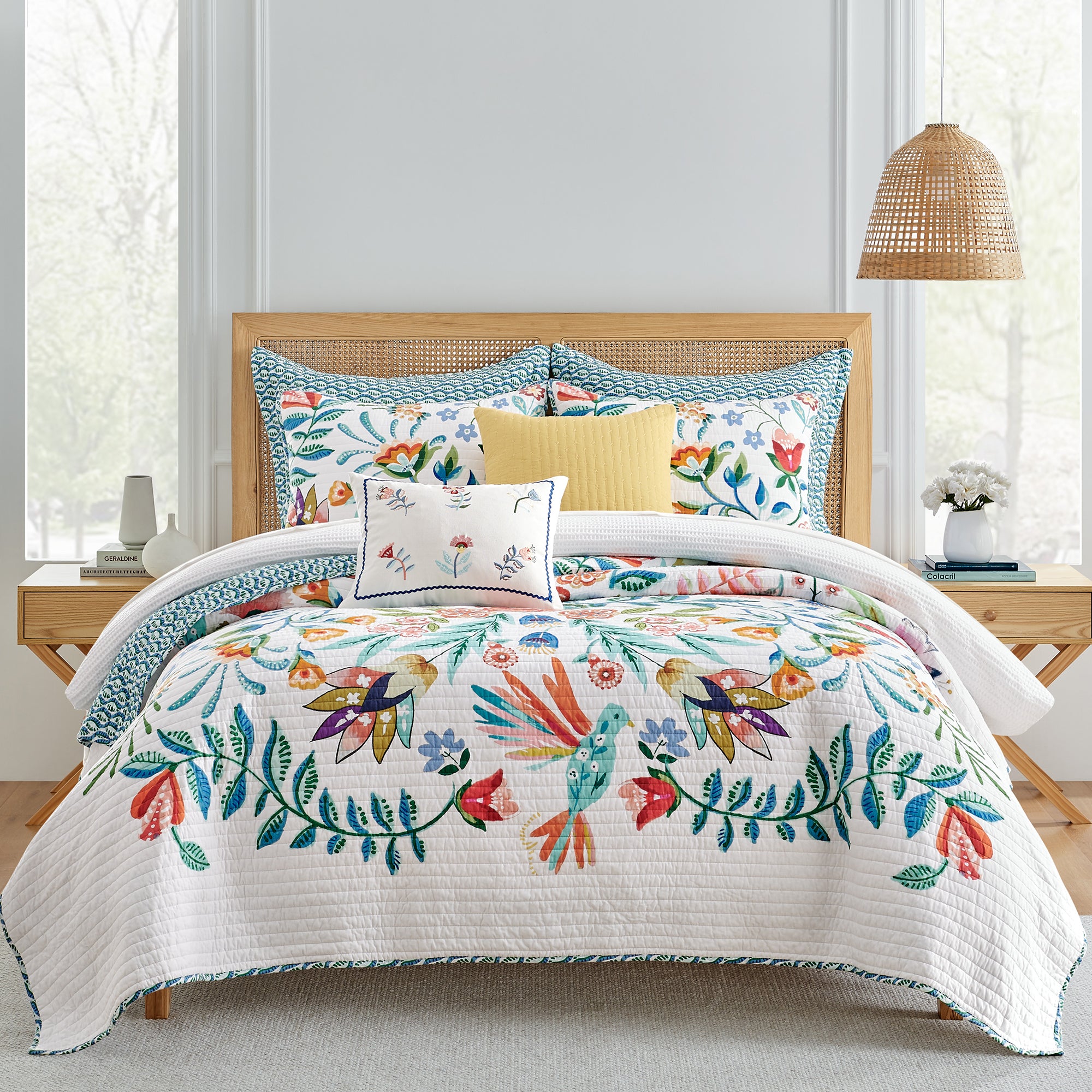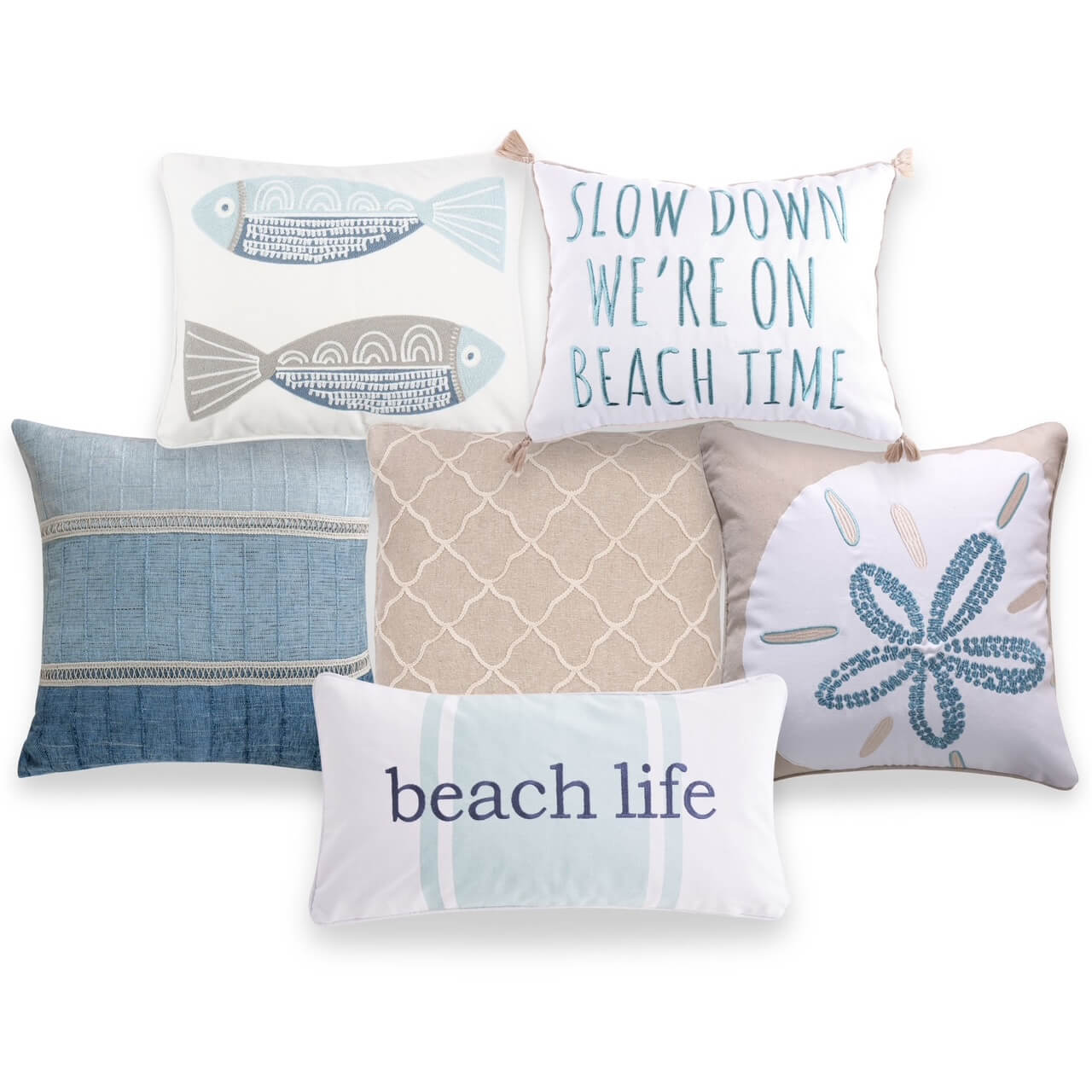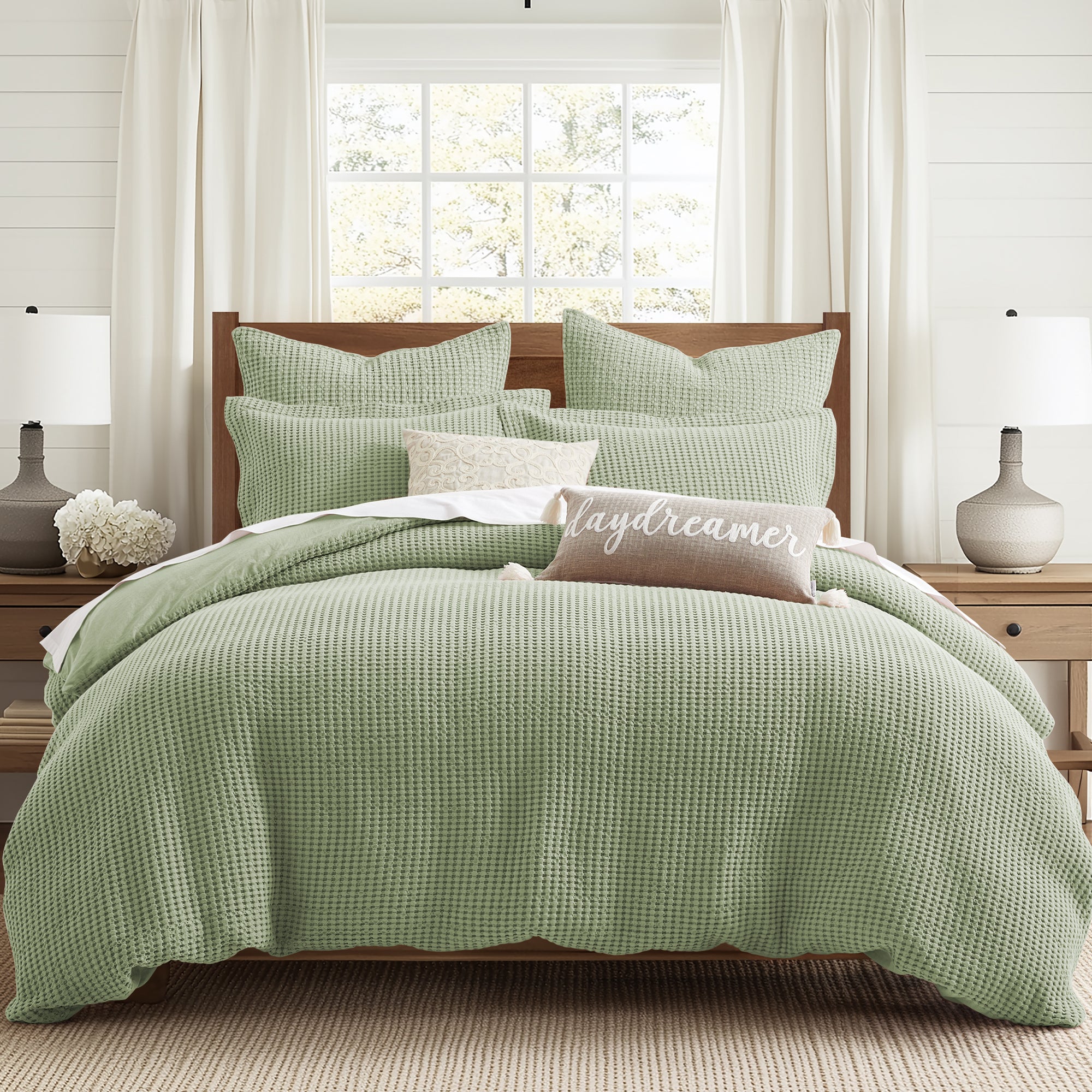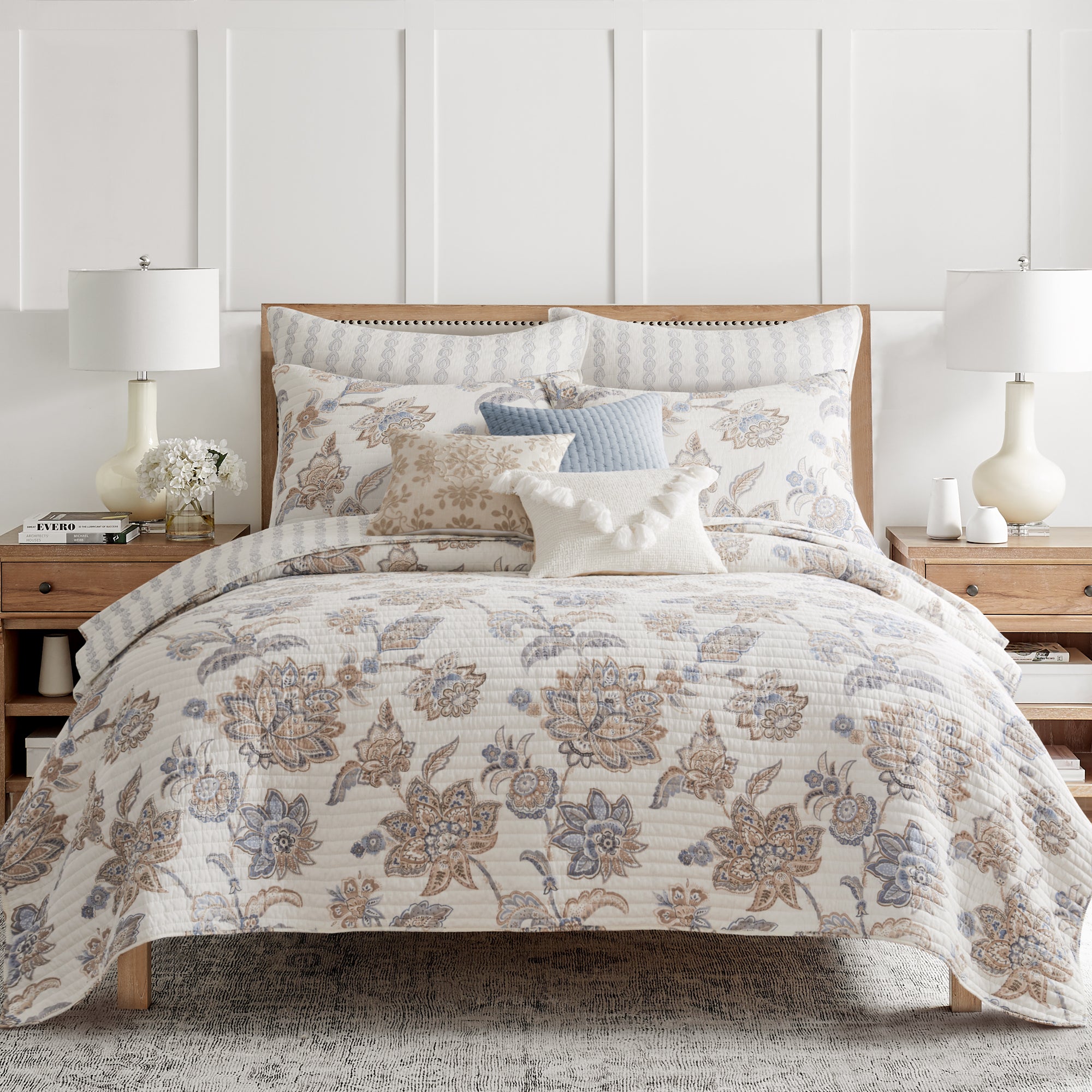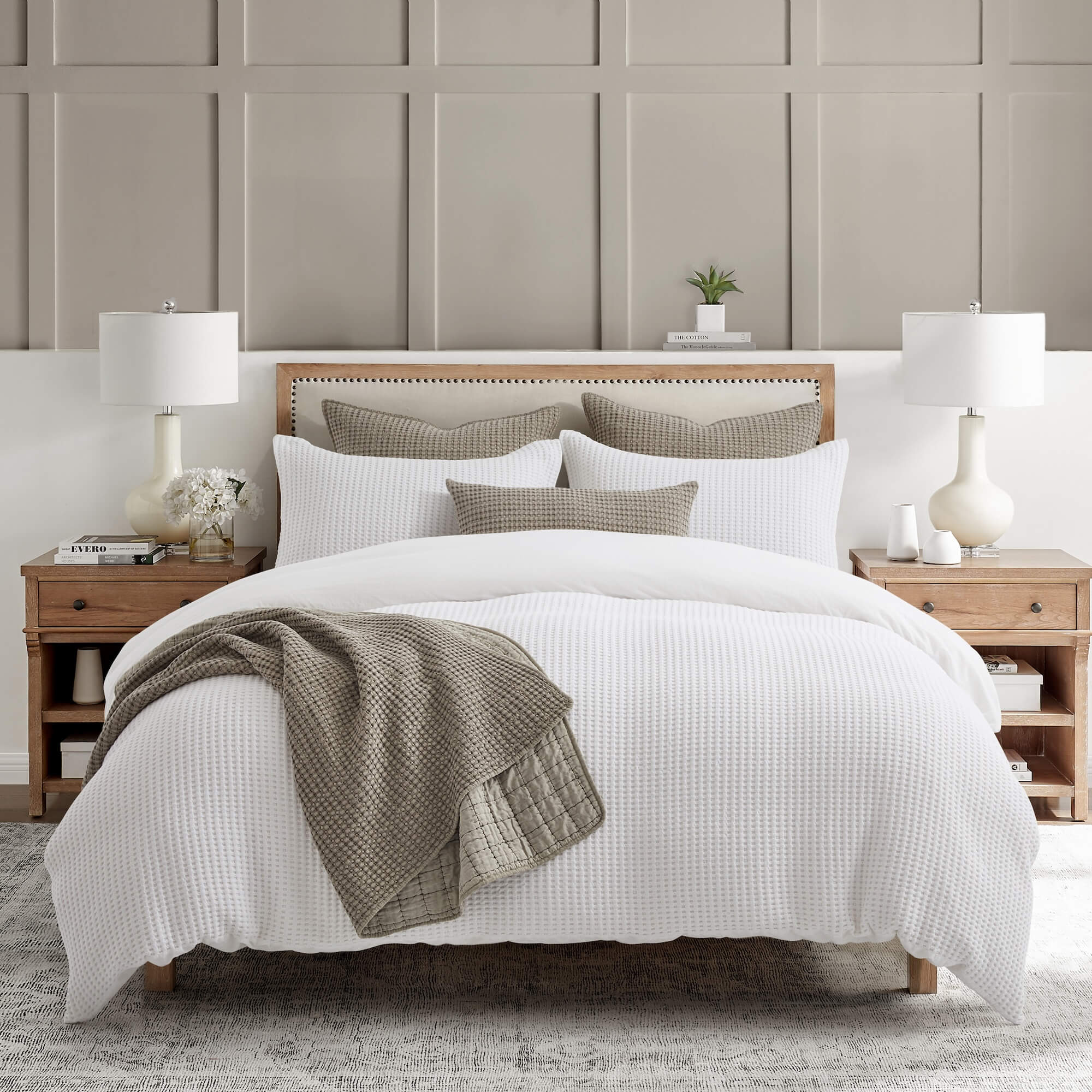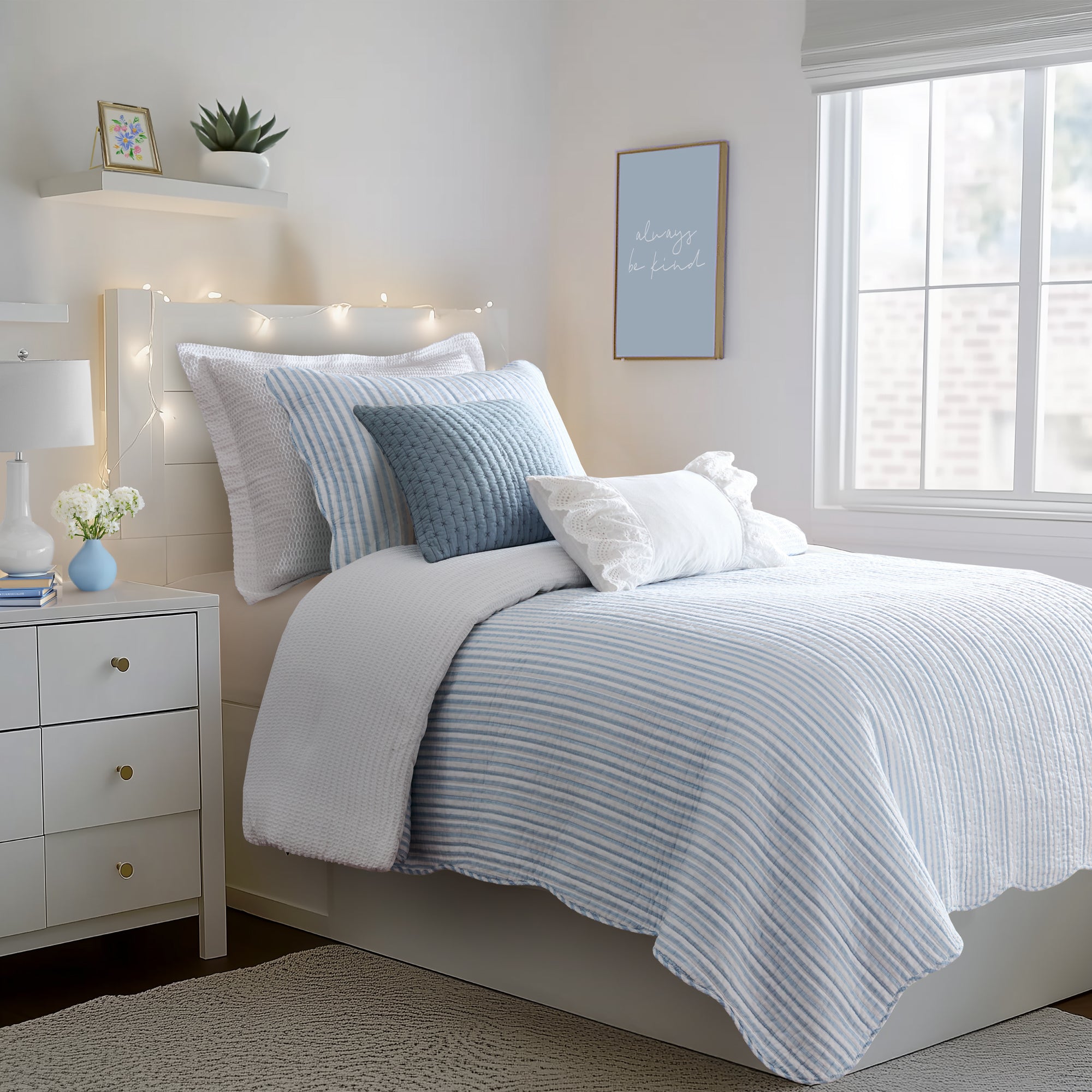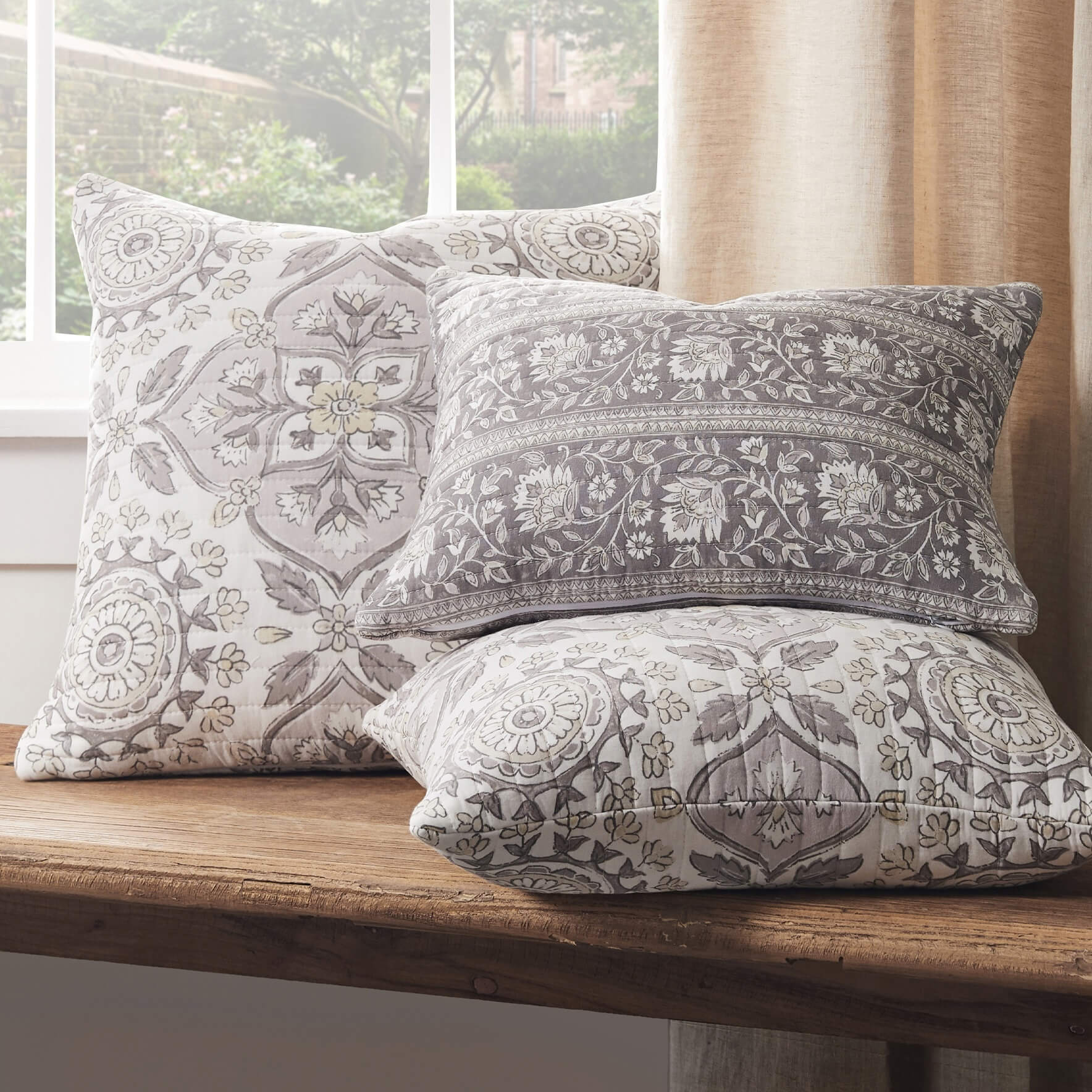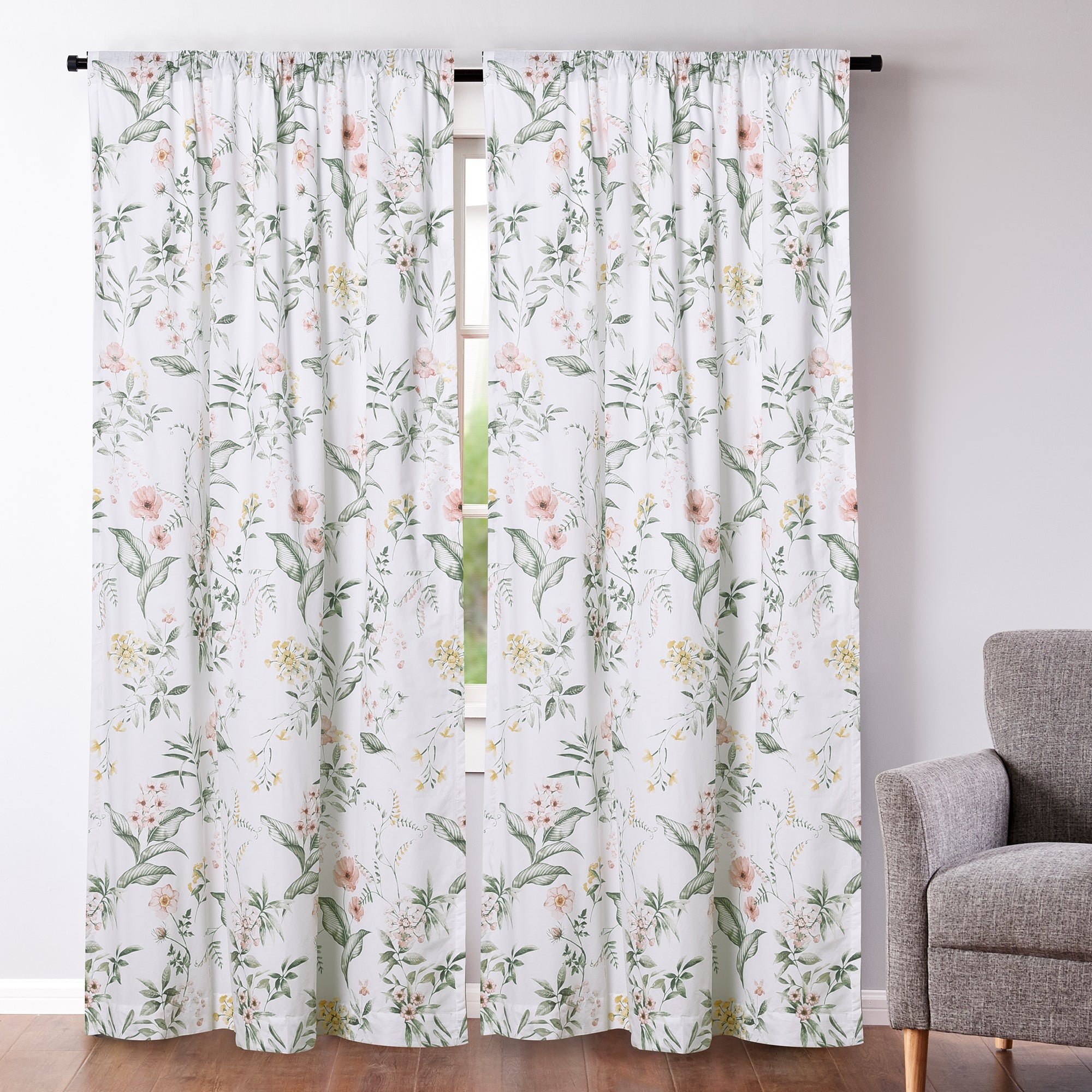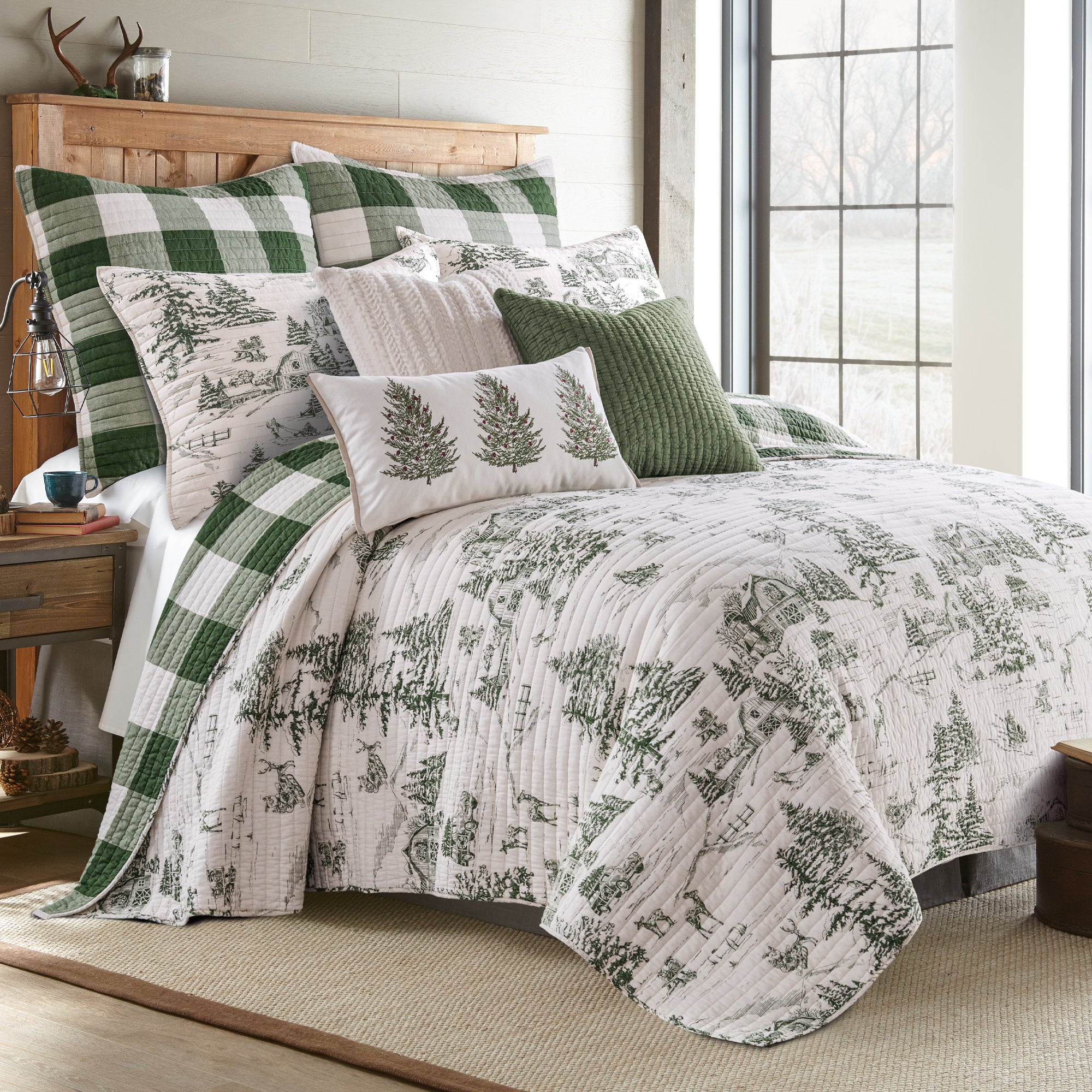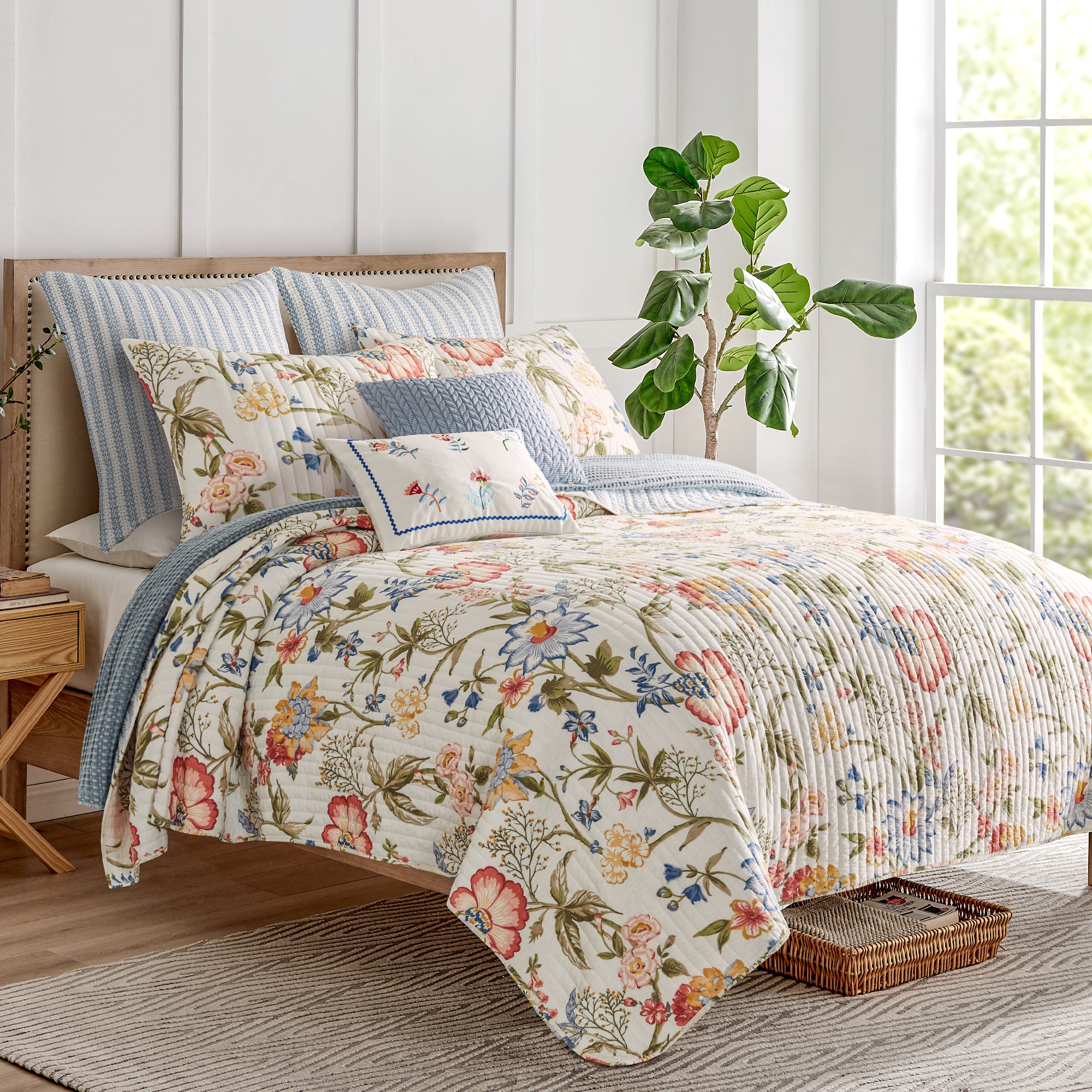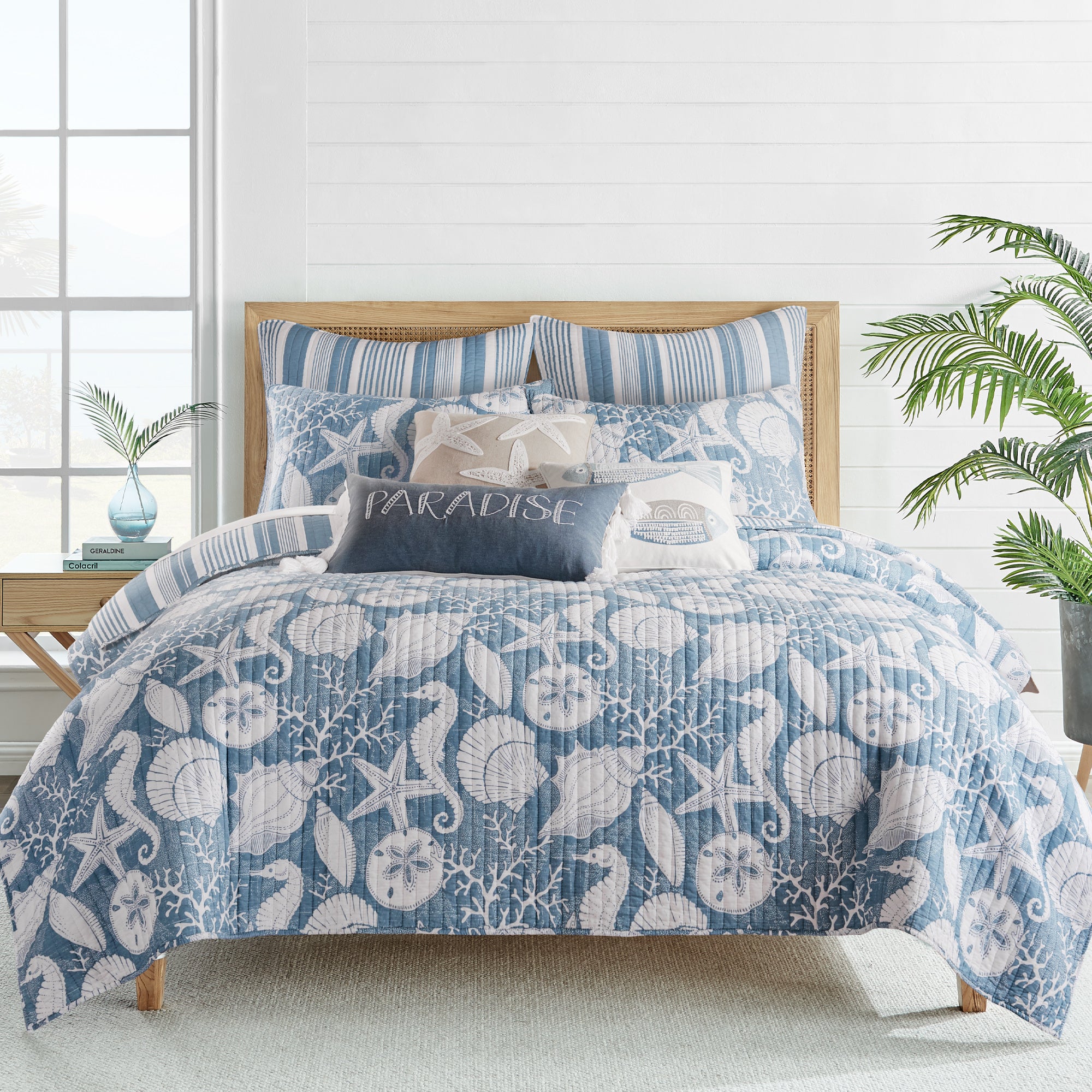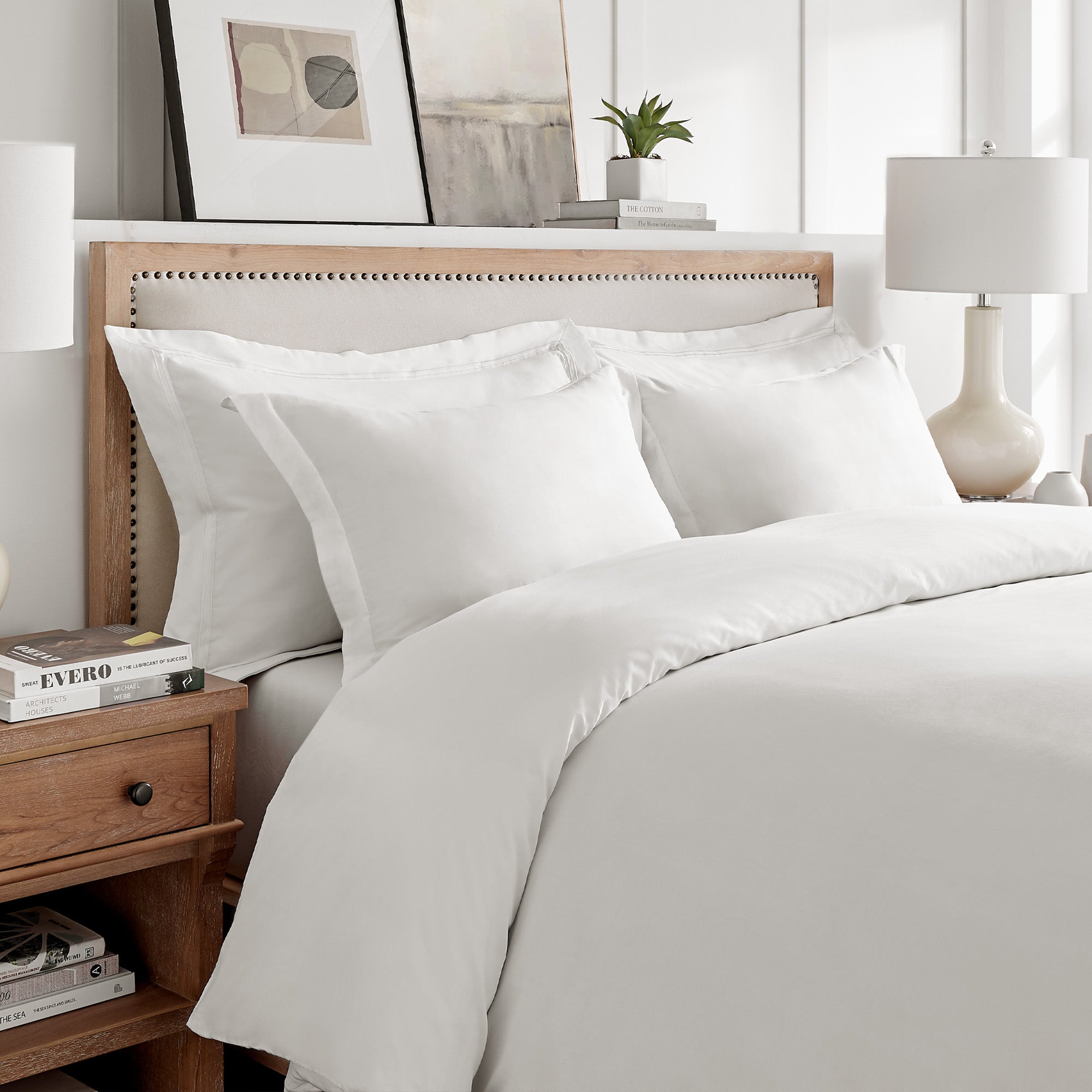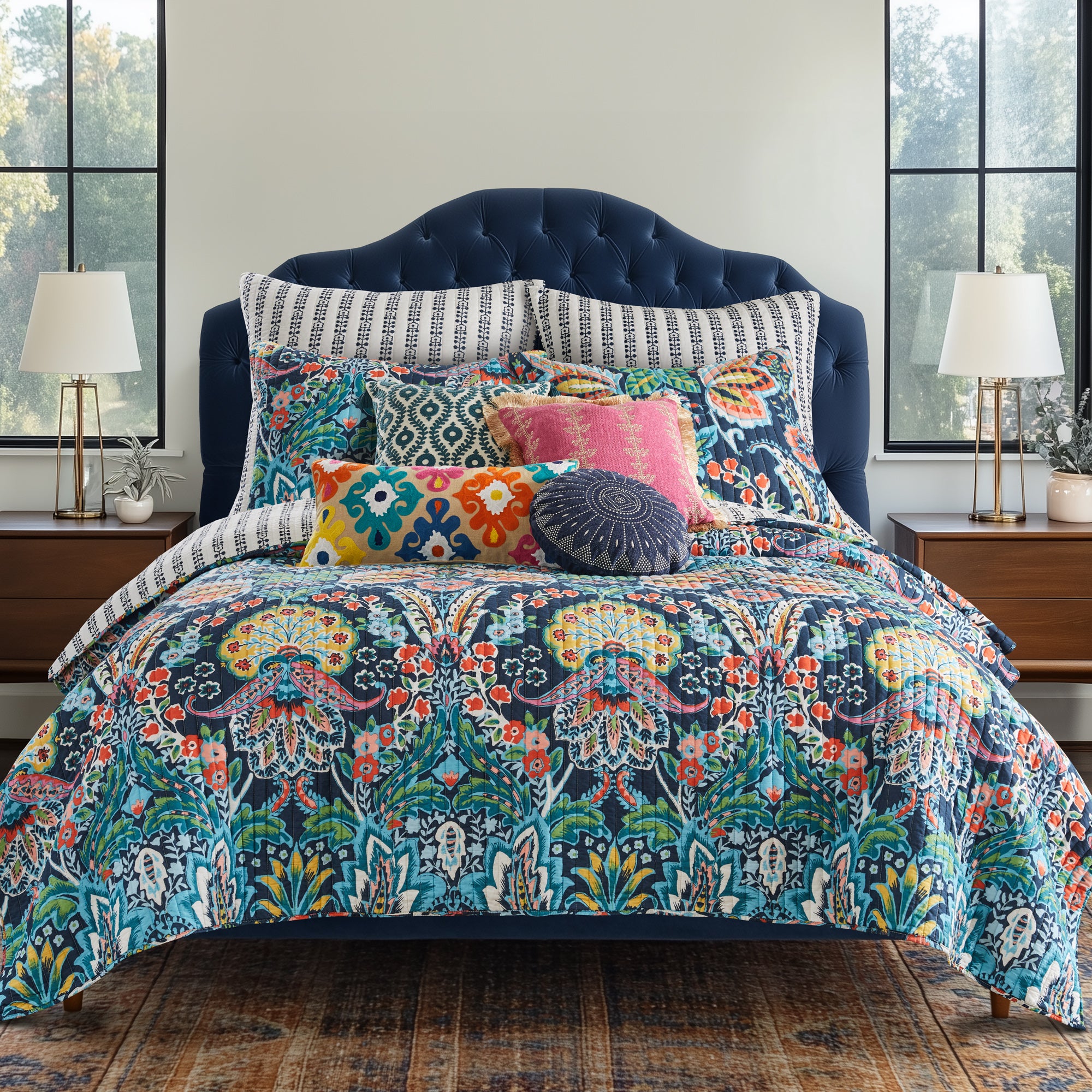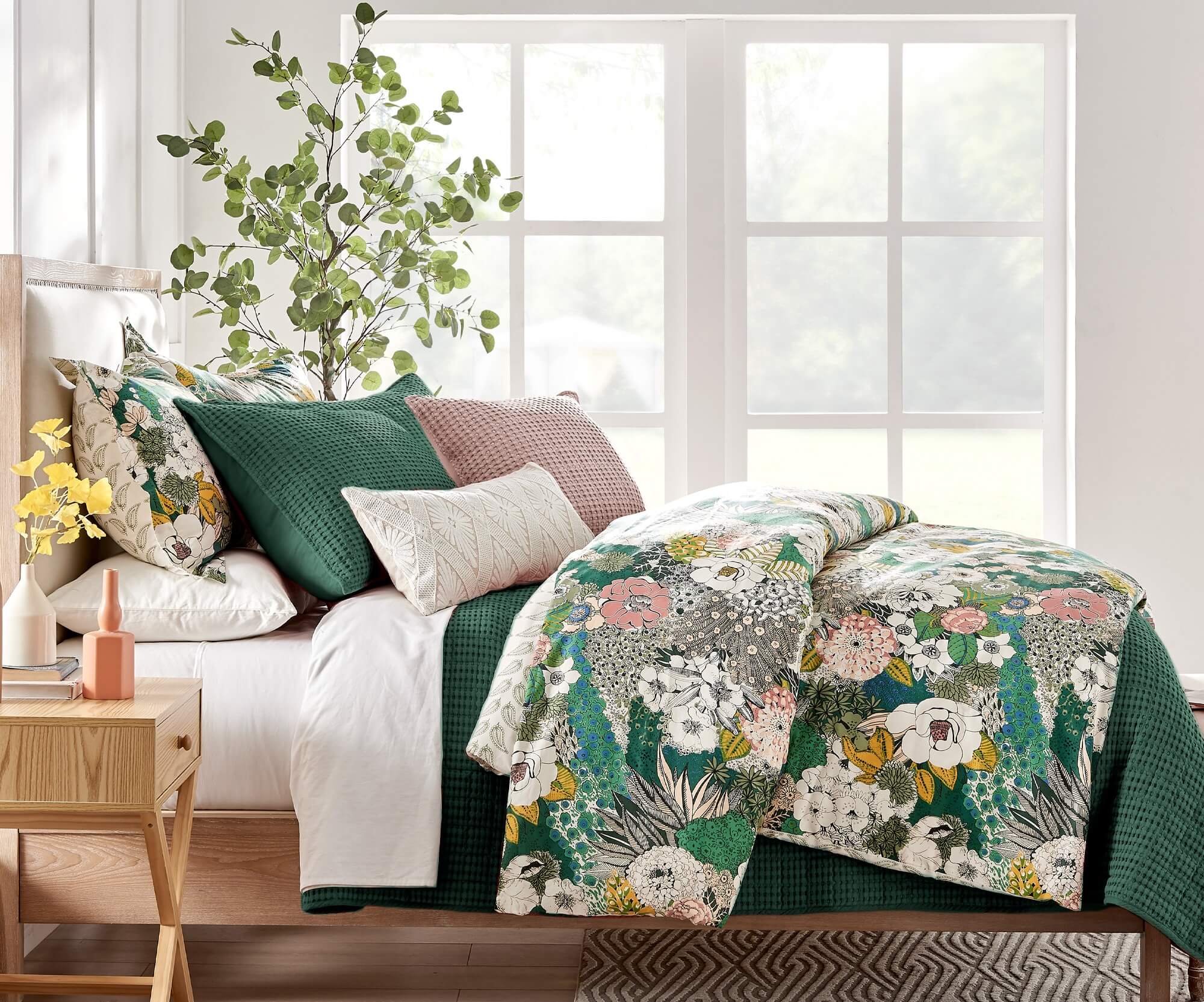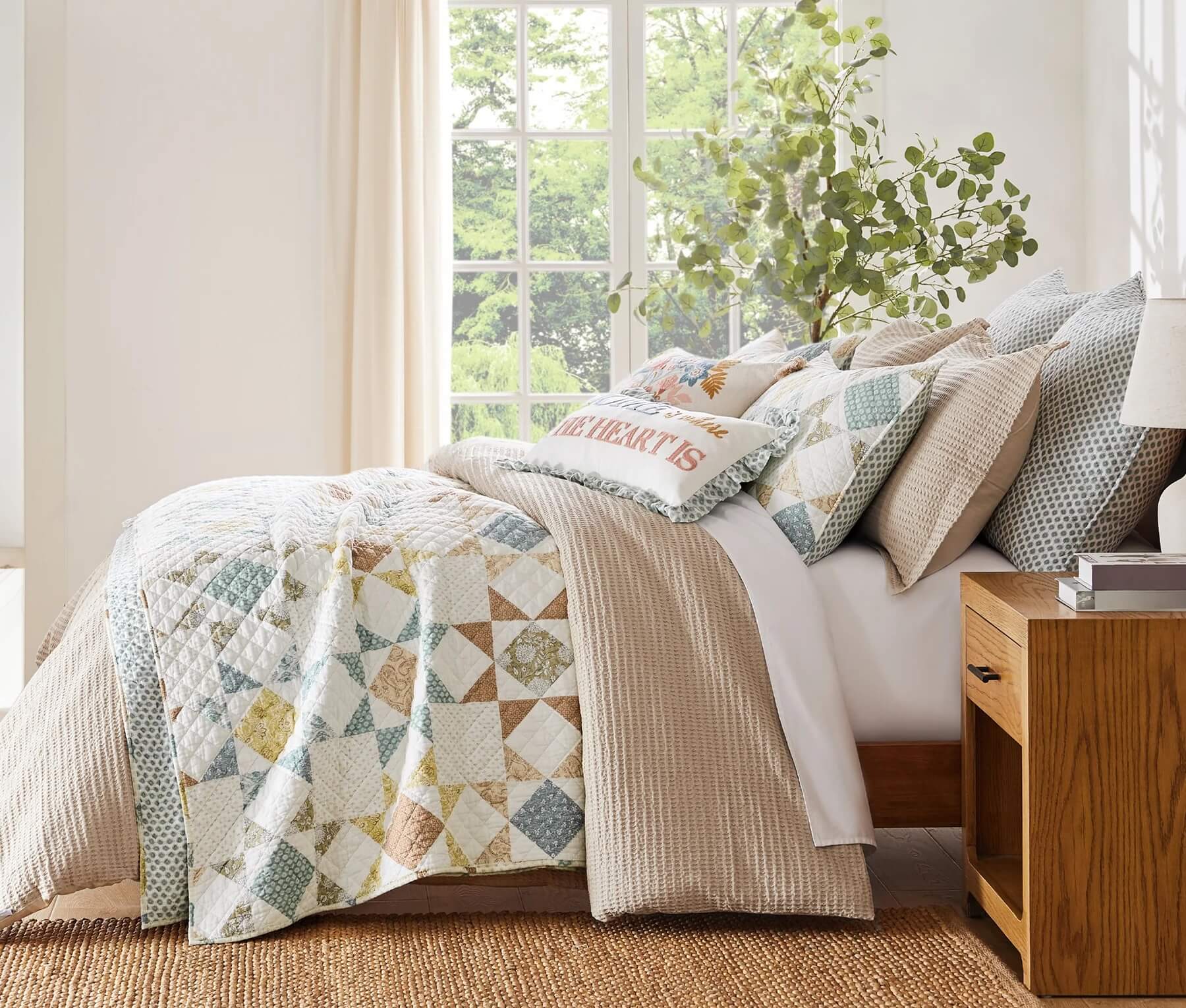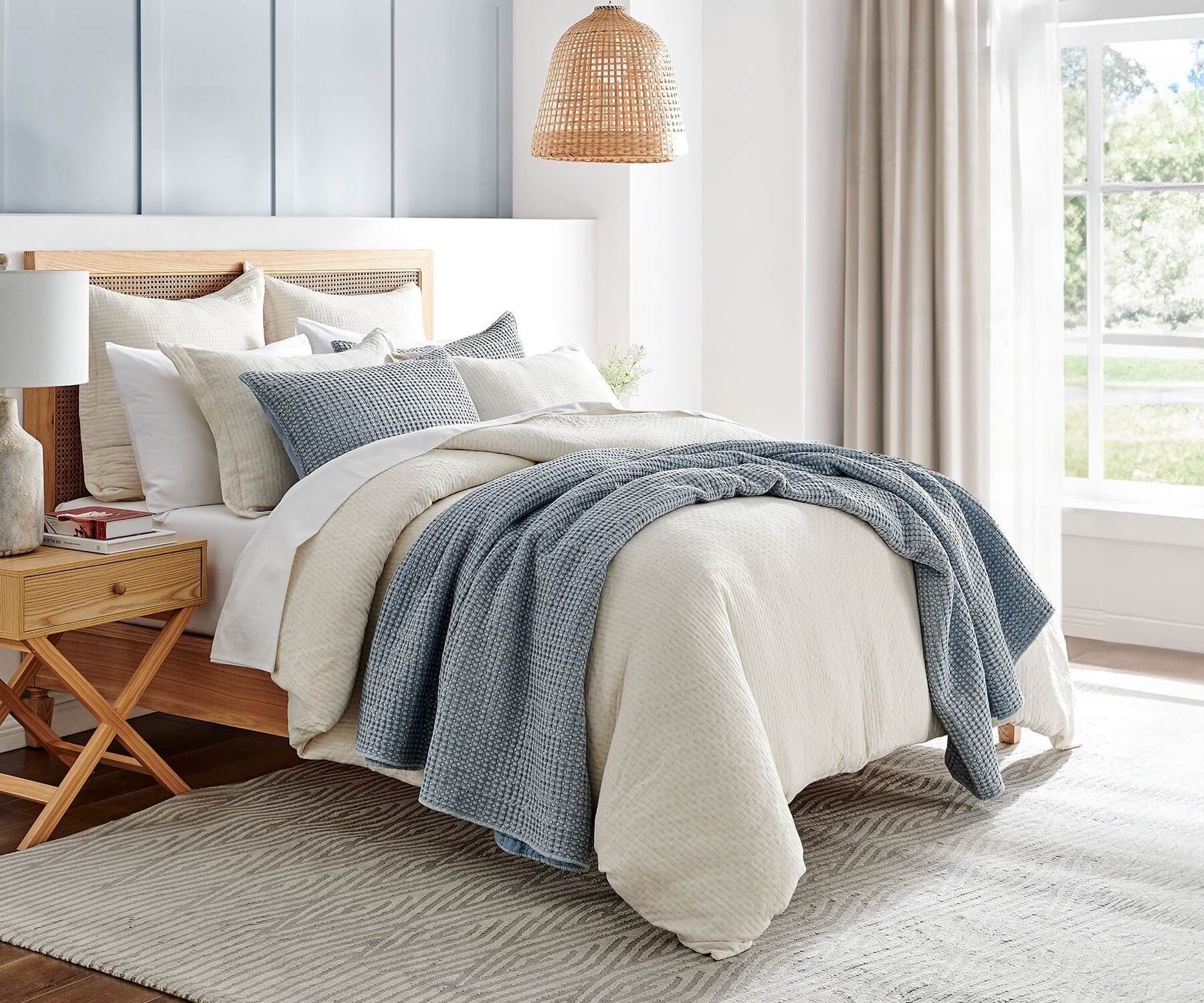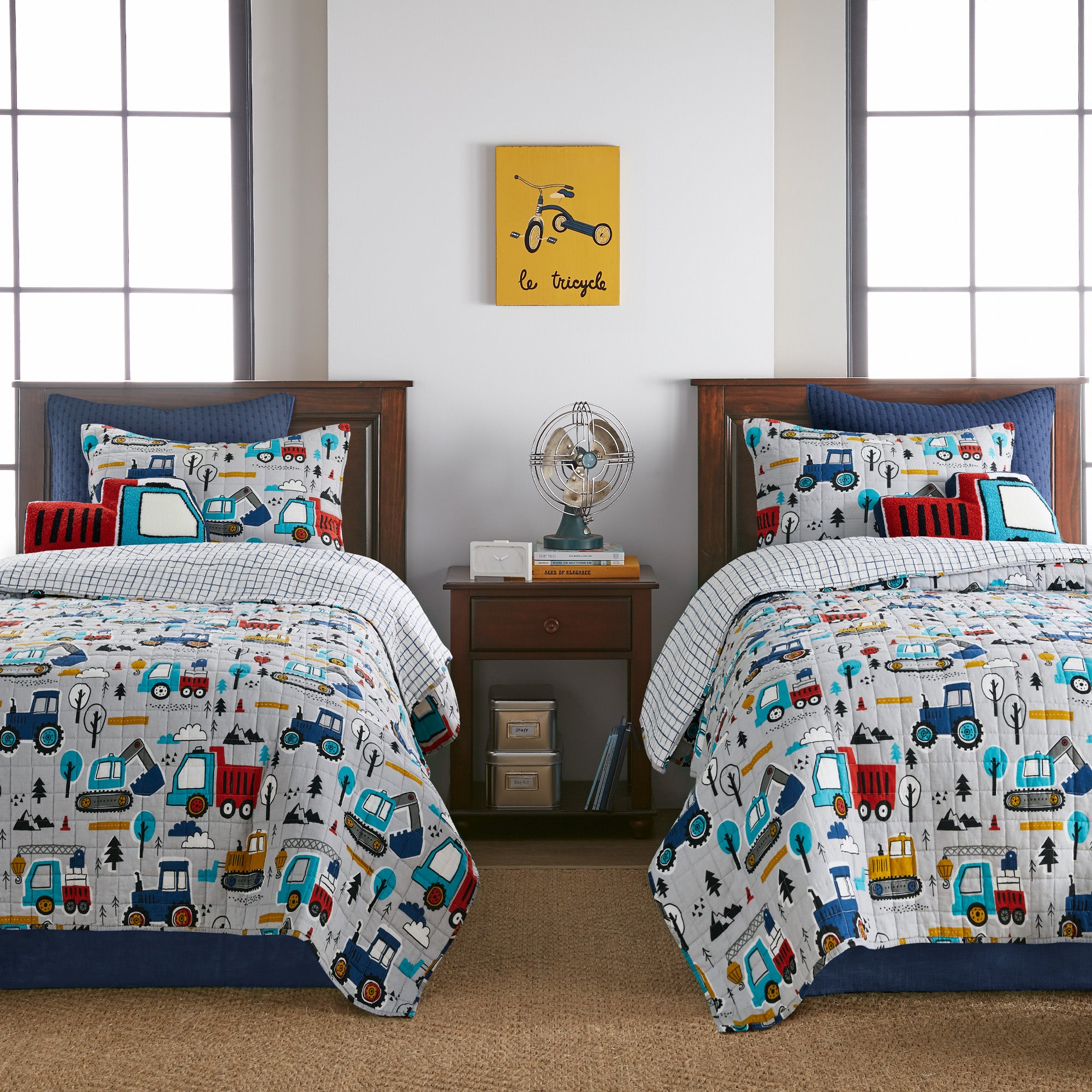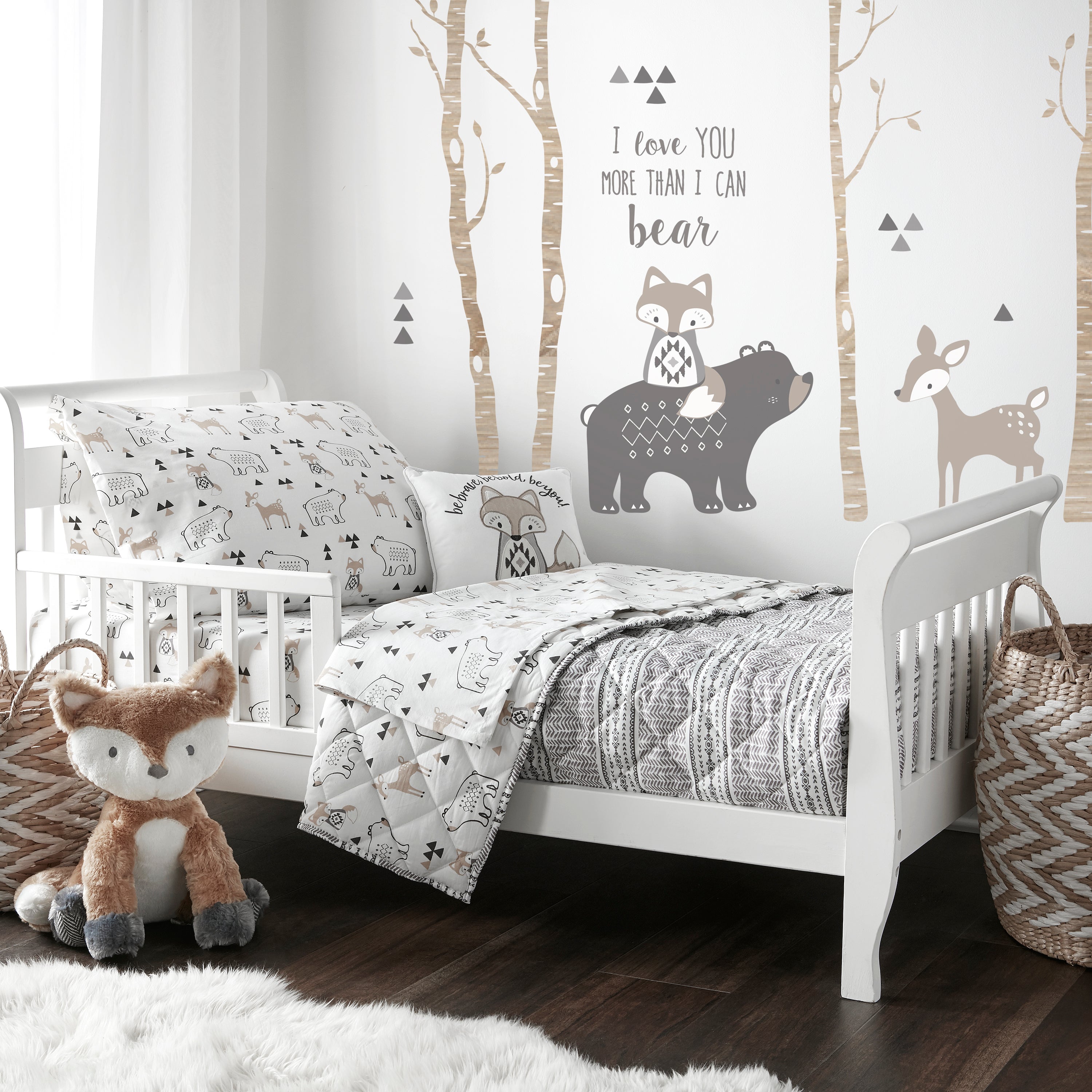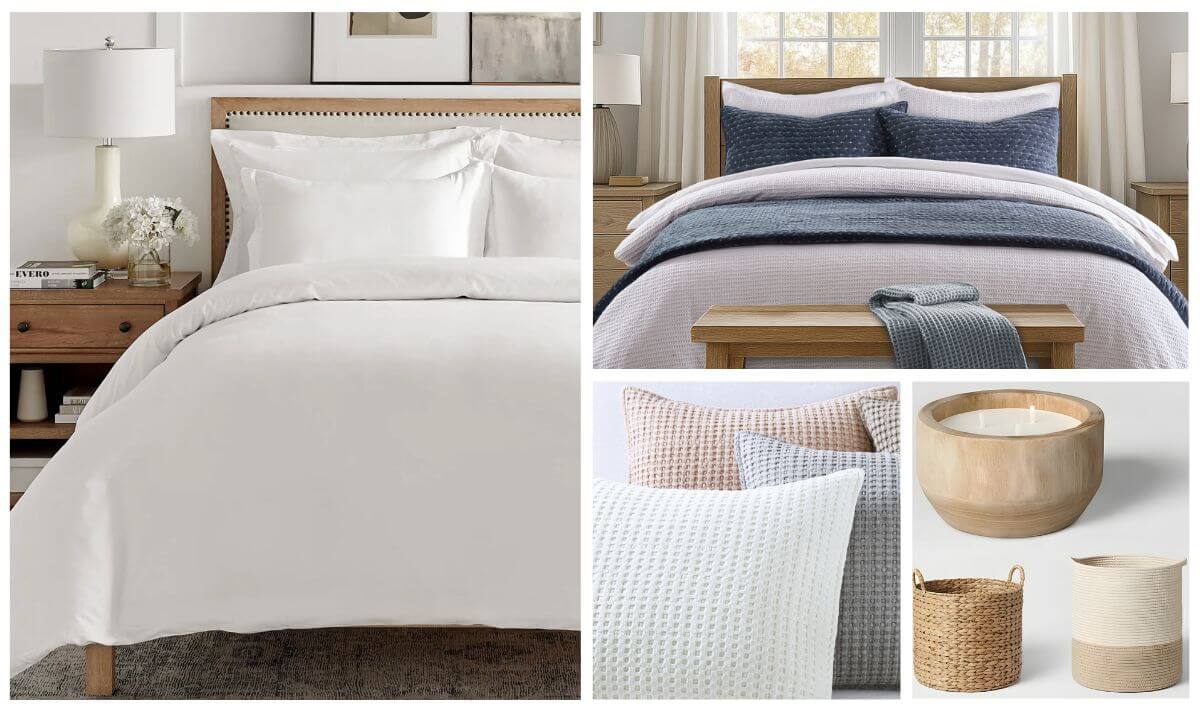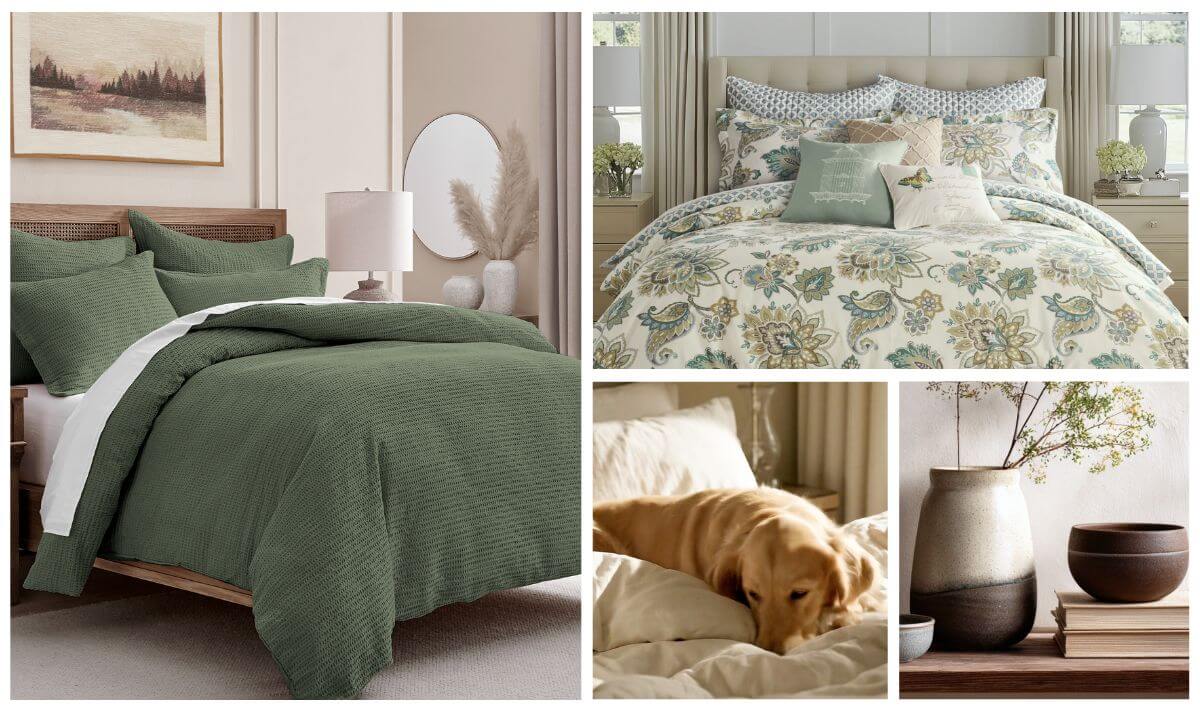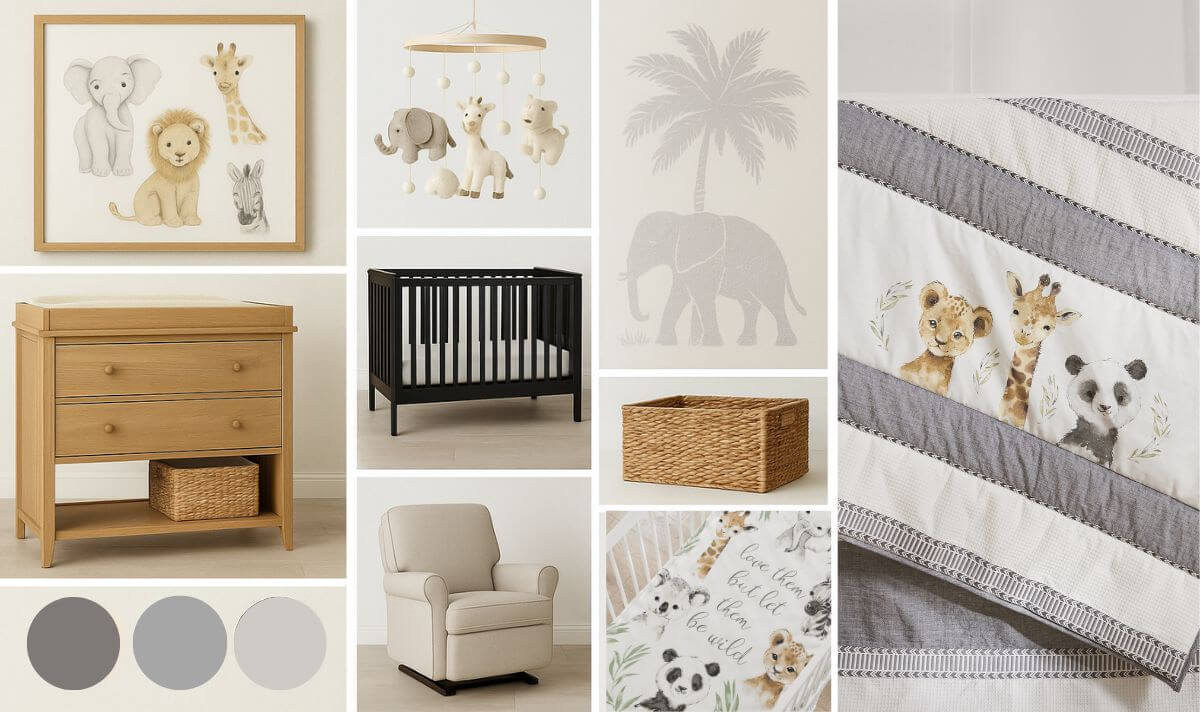INFANT SAFETY
INFANT BEDDING SAFETY
To reduce the risk of SIDS, pediatricians recommend healthy infants be placed on their backs to sleep, unless otherwise advised by your physician.
ALWAYS use a crib sheet that fits securely on the mattress and wraps around the mattress corners.
Only a tight fitting sheet, mattress pad and/or waterproof pad should be used under the baby.
NEVER place infants to sleep on pillows, sofa cushions, adult beds, water beds, beanbags, or any other surface not specifically designed for infant sleep.
Remove pillows, sheepskins, pillow-like stuffed toys and products not intended as infant bedding from the crib when infants are sleeping. NEVER place additional padding under an infant.
Do not overdress your baby. Consider using a sleeper, wearable blanket or other sleep clothing as an alternative to any covering.
For newborns, consider swaddling.
Check periodically for loose threads, fibers or stitching which could cause gagging or choking.
CRIB SAFETY
The safest place for a baby to sleep is in a fully functional, properly assembled crib. Before you use a crib, check to make sure the crib has not been recalled.
You should never purchase or use second hand cribs handed down from friends or family members as they may not meet the most current safety standards.
Drop side cribs are no longer available for purchase; however if you are using a previously purchased drop-side crib, parents should ensure that the drop-side or any other moving part operates smoothly. Remember to ALWAYS secure the moveable side when baby is in the crib.
Make sure there are no missing, loose or broken parts on improperly installed screws, brackets or other hardware on the crib or the mattress support. Check the stability and hardware on the crib often. Do not substitute hardware. Only use the hardware obtained directly from the manufacturer.
Always use a properly fitting mattress as infants can suffocate in gaps between a poorly fitting mattress and the sides or ends.
Never leave items not intended for the crib hanging on the corner posts or sides of the crib. Babies can pull those items into the crib or become entangled in them.
When your child is able to pull to a standing position, set the mattress to the lowest position and remove objects that could serve as steps for climbing out. It’s time to move your child to a toddler bed when he or she begins to climb out or reaches 35in.
Never place the crib near windows where cords from blinds or drapes may strangle a child.
Mobiles should be removed from the crib when baby can push up on hands and knees or pull up to a standing position.
If using a baby monitor with cords, make sure all cords are out of arm’s reach of your child. Never place any item in or on the crib that has cords, strings, etc. as babies can become entangled and strangle in these items.
Do not put a baby monitor in the crib, bassinet, or toddler bed.

